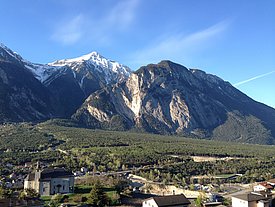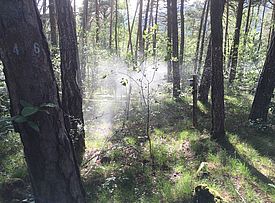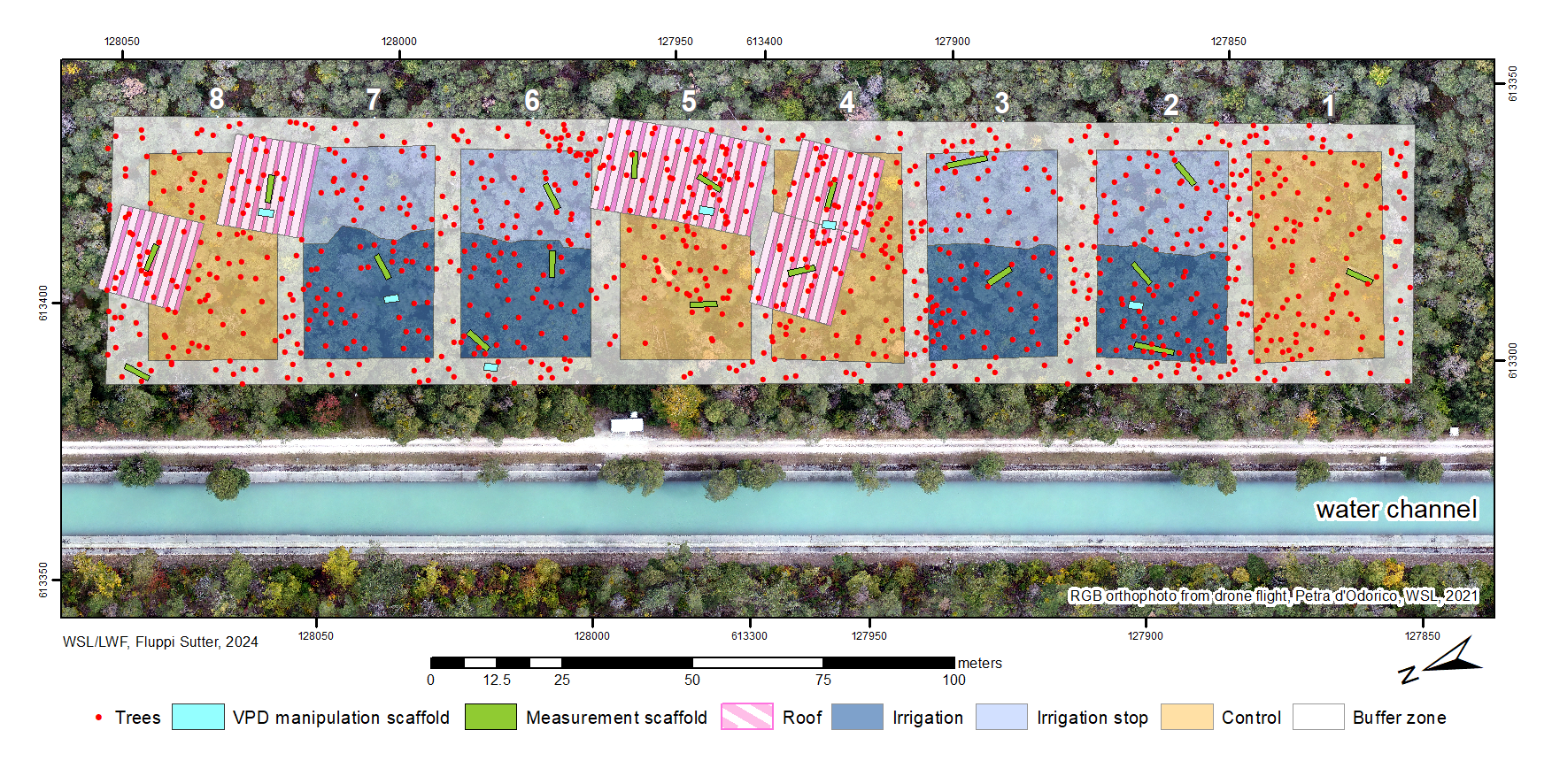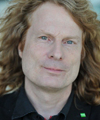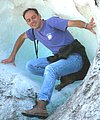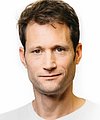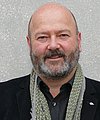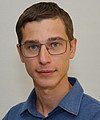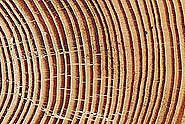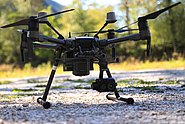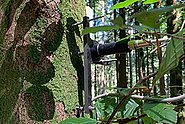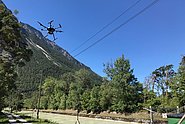
The Pfynwald research platform ¶
At the beginning of this century, numerous Scots pines in the Rhone Valley, one of the driest inner alpine valleys of the European Alps, situated between Brig and Sion (Canton Valais), started showing symptoms of drought. Many older trees had already died. To investigate the causes of the pine dieback, the WSL launched a long-term irrigation experiment in the Pfyn-Finges Nature Park in summer 2003. Since then, the WSL has been comparing the responses of several hundred Scots pines in irrigated forest plots with those of trees that continued to receive only the natural amount of precipitation.
Since 2024, we have implemented an additional, world-wide unique approach to disentangle the processes affected by atmospheric and soil droughts. For more details, see VPDrought-Experiment.
Contents ¶
Results from experiments in dry areas with a long series of in-situ measurements are necessary for a better understanding of the medium- to long-term effects of drought periods on forests.
As the largest contiguous pine forest in Switzerland, the Pfyn forest in Canton Valais (46° 18' N, 7° 36' E, 615 m asl) offers the best conditions for such measurements. In light of this, a WSL research team set up a long-term experiment that is to last 30 years in this forest. The average temperature here is 10.6°C (average 1995-2014), the yearly accumulated precipitation is 575 mm (average 1995-2014). The pines are about 130 years old and 12 m high. The test area comprises approx. 800 trees over a surface of 1.2 ha divided into 8 plots of 1000 m2 each (Figure 4). Between April and October, four of these plots are irrigated by a sprinkler system which provides an additional 600 mm of water annually. In the other four plots, the trees grow under natural, hence relatively dry conditions.
Results to date ¶
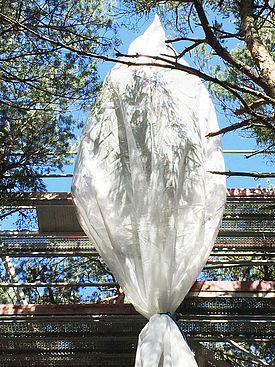
Almost immediately after measurements began in 2003, a considerable increase in the production of mycorrhiza fruit bodies was noticeable in the irrigated subplots. After a one-year lag, the pines have been forming wider tree rings and longer needles than before since 2004. In the following years, the length of the height and branch shoots and the stand density increased as well. From the summer 2006, irrigation has also increased root growth and led to more biomass, especially in the fine roots (Brunner et al. 2009). The growth period of irrigated trees was extended by 2 to 5 weeks (Eilmann et al. 2010).
Over the entire experimental period from 2003 to 2019, the irrigation experiment allowed us to track the recovery trajectories in trees and in the whole ecosystem released from the natural dry conditions. The monitoring data over 16 years showed that irrigation improved the soil water availability, and 120-year-old Scots pine trees were able to regain vigor by increasing shoot length, needle length and leaf area, and by decreasing crown transparency.
We detected rapid and stronger responses from above-ground tree traits compared to below-ground tree traits. The altered above-ground traits during the initial years of irrigation increased the water demand. Trees adjusted by increasing root biomass during the later years of irrigation, resulting in an increased survival rate of Scots pine trees in irrigated plots. However, after reaching the peak in 2006, the magnitude of the impact of irrigation on a number of tree-related variables declined in the following years. This declining trend after reaching the peak may indicate that the water supply at a constant rate over the years did not meet the progressively increasing water demand from increasing vegetation activities.
The results indicate that increased water availability in the long term changed tree and ecosystem properties in a way that a new balance between soil water availability and water demand is reached, which changed the boundary conditions of the ecosystem. The irrigation also stimulated foliar decomposition rate at ecosystem level, biomass of fungal fruit body, and abundance of regeneration in broadleaved tree species. However, irrigation did not promote the regeneration of Scots pine trees, which are reported to be vulnerable to extreme droughts (Bose et al. 2022).
The map can be downloaded and printed in A3 or A0 format for field work.
In Switzerland, the temperature increase from the end of the 20th century to the beginning of the 21st was more than twice the global average. Climate models suggest that the 21st century will see a further rise in temperatures. In conjunction with the heat-related increase in evaporation and more frequent heat waves, it is safe to assume that the water supply available to trees is steadily deteriorating and that heavy rainfall is to be increasingly expected in the summer months. As this rainfall will increase surface water runoff and will not seep into the soil, plants will increasingly suffer from stress caused by drought. Consequently, the vitality and growth of the pines will drop. In the long term, drought may lead to an increasing number of tree deaths and cause vegetation areas to shift. This is particularly true for the forest ecosystem of inner-alpine dry valleys such as those in Valais (Rigling et al. 2013).
Links to the topic: Long-term Forest Ecosystem Research LWF, Sanasilva inventory
Sponsors ¶
We appreciate the long standing support received from HYDRO Exploitation SA in Sion and from the forest service Forstregion Leuk.
Financing ¶
Partners ¶
Project lead ¶
Deputies ¶
Participants ¶
WSL publications ¶
Publications ¶
For an adequate citation of Pfyn forest studies and data, please include the following citation in the acknowledgements:
"Evaluations are based on data from the long-term experimental research platform Pfynwald, which is part of the Swiss Forest Lab and the eLTER research infrastructures. We are in particular grateful to X who provided the Z data and the Pfynwald core team for their support."
Cuartero J., Brunner I., Schaub M., Gwiazdowicz D.J., Skubała P., Qin J., … Frey B. (2025) Comparing soil microarthropod communities derived directly from soil DNA metabarcoding with those from morphological assessment in a drought-prone and irrigated pine forest. Appl. Soil Ecol. 209, 106042 (14 pp.). https://doi.org/10.1016/j.apsoil.2025.106042Institutional Repository DORA
Chin A.R.O., Gessler A., Laín O., Østerlund I., Schaub M., Théroux-Rancourt G., … Lambers J.H.R. (2025) The memory of past water abundance shapes trees 7 years later. Am. J. Bot. 112(1), e16452 (10 pp.). https://doi.org/10.1002/ajb2.16452Institutional Repository DORA
Chin A., Hille Ris Lambers J., Schaub M. (2025) Trees 'remember' wetter times − never having known abundant rain could buffer today’s young forests against climate change. The Conversation. Institutional Repository DORA
Shakas A., Hediger R., Gessler A., Singha K., de Pasquale G., D'Odorico P., … Meusburger K. (2025) Does optimality partitioning theory fail for belowground traits? Insights from geophysical imaging of a drought‐release experiment in a Scots Pine forest. New Phytol. 245(2), 546-558. https://doi.org/10.1111/nph.20245 Institutional Repository DORA
Cuartero J., Frey B., Eder R., Brunner I. (2024) More than a decade of irrigation alters soil nematode communities in a drought-prone Scots pine forest. Appl. Soil Ecol. 203, 105621 (10 pp.). https://doi.org/10.1016/j.apsoil.2024.105621Institutional Repository DORA
Gauthey A., Bachofen C., Chin A., Cochard H., Gisler J., Mas E., … Grossiord C. (2024) Twenty years of irrigation acclimation is driven by denser canopies and not by plasticity in twig- and needle-level hydraulics in a Pinus sylvestris forest. J. Exp. Bot. 75(10), 3141-3152. https://doi.org/10.1093/jxb/erae066 Institutional Repository DORA
Hunziker S., Nazarova T., Kather M., Hartmann M., Brunner I., Schaub M., … Gessler A. (2024) The metabolic fingerprint of Scots pine – root and needle metabolites show different patterns in dying trees. Tree Physiol. 44(4), tpae036 (10 pp.). https://doi.org/10.1093/treephys/tpae036Institutional Repository DORA
Vitali V., Schuler P., Holloway‐Phillips M., D'Odorico P., Guidi C., Klesse S., … Saurer M. (2024) Finding balance: tree‐ring isotopes differentiate between acclimation and stress‐induced imbalance in a long‐term irrigation experiment. Glob. Chang. Biol. 30(3), e17237 (20 pp.). https://doi.org/10.1111/gcb.17237Institutional Repository DORA
Gao D., Luster J., Zürcher A., Arend M., Bai E., Gessler A., … Hagedorn F. (2024) Drought resistance and resilience of rhizosphere communities in forest soils from the cellular to ecosystem scale – insights from 13C pulse labeling. New Phytol. 242(3), 960-974. https://doi.org/10.1111/nph.19612 Institutional Repository DORA
Hartmann M., Herzog C., Brunner I., Stierli B., Meyer F., Buchmann N., Frey B. (2023) Long-term mitigation of drought changes the functional potential and life-strategies of the forest soil microbiome involved in organic matter decomposition. Front. Microbiol. 14, 1267270 (16 pp.). https://doi.org/10.3389/fmicb.2023.1267270Institutional Repository DORA
Gauthey A., Bachofen C., Deluigi J., Didion-Gency M., D'Odorico P., Gisler J., … Grossiord C. (2023) Absence of canopy temperature variation despite stomatal adjustment in Pinus sylvestris under multidecadal soil moisture manipulation. New Phytol. 240(1), 127-137. https://doi.org/10.1111/nph.19136 Institutional Repository DORA
Guidi C., Lehmann M.M., Meusburger K., Saurer M., Vitali V., Peter M., … Hagedorn F. (2023) Tracing sources and turnover of soil organic matter in a long-term irrigated dry forest using a novel hydrogen isotope approach. Soil Biol. Biochem. 184, 109113 (10 pp.). https://doi.org/10.1016/j.soilbio.2023.109113Institutional Repository DORA
Zhang Y.L., Yang Y., Saurer M., Schaub M., Gessler A., Lehmann M.M., … Li M.H. (2023) Sugar infusion into trees: a novel method to study tree carbon relations and its regulations. Front. Plant Sci. 14, 1142595 (11 pp.). https://doi.org/10.3389/fpls.2023.1142595Institutional Repository DORA
Zweifel R., Pappas C., Peters R.L., Babst F., Balanzategui D., Basler D., … Sterck F. (2023) Networking the forest infrastructure towards near real-time monitoring - a white paper. Sci. Total Environ. 872, 162167 (11 pp.). https://doi.org/10.1016/j.scitotenv.2023.162167Institutional Repository DORA
Saurer M., Sahlstedt E., Rinne-Garmston K.T., Lehmann M.M., Oettli M., Gessler A., Treydte K. (2023) Progress in high-resolution isotope-ratio analysis of tree rings using laser ablation. Tree Physiol. 43(5), 694-705. https://doi.org/10.1093/treephys/tpac141 Institutional Repository DORA
Hunziker S., Begert M., Scherrer S.C., Rigling A., Gessler A. (2022) Below average midsummer to early autumn precipitation evolved into the main driver of sudden scots pine vitality decline in the Swiss Rhône Valley. Front. For. Glob. Change. 5, 874100 (20 pp.). https://doi.org/10.3389/ffgc.2022.874100Institutional Repository DORA
Maeder M., Guo X., Neff F., Schneider Mathis D., Gossner M.M. (2022) Temporal and spatial dynamics in soil acoustics and their relation to soil animal diversity. PLoS One. 17(3), e0263618 (22 pp.). https://doi.org/10.1371/journal.pone.0263618Institutional Repository DORA
Guidi C., Frey B., Brunner I., Meusburger K., Vogel M.E., Chen X., … Hagedorn F. (2022) Soil fauna drives vertical redistribution of soil organic carbon in a long‐term irrigated dry pine forest. Glob. Chang. Biol. 28(9), 3145-3160. https://doi.org/10.1111/gcb.16122 Institutional Repository DORA
Bose A.K., Rigling A., Gessler A., Hagedorn F., Brunner I., Feichtinger L., … Schaub M. (2022) Lessons learned from a long‐term irrigation experiment in a dry Scots pine forest: impacts on traits and functioning. Ecol. Monogr. 92(2), e1507 (18 pp.). https://doi.org/10.1002/ecm.1507Institutional Repository DORA
Rissanen K., Aalto J., Gessler A., Hölttä T., Rigling A., Schaub M., Bäck J. (2022) Drought effects on volatile organic compound emissions from Scots pine stems. Plant Cell Environ. 45(1), 23-40. https://doi.org/10.1111/pce.14219 Institutional Repository DORA
D'Odorico P., Schönbeck L., Vitali V., Meusburger K., Schaub M., Ginzler C., … Ensminger I. (2021) Drone‐based physiological index reveals long‐term acclimation and drought stress responses in trees. Plant Cell Environ. 44(11), 3552-3570. https://doi.org/10.1111/pce.14177 Institutional Repository DORA
Eugster W., Baumgartner L.P., Bachmann O., Baltensperger U., Dèzes P., Dubois N., … RoTaGeo team (2021) Geosciences roadmap for research infrastructures 2025–2028 by the Swiss Geosciences Community. (Swiss Academies reports, Report No.: 16/4). Swiss Academy of Sciences (SCNAT). 55 p. https://doi.org/10.5281/zenodo.4588881Institutional Repository DORA
Gao D., Joseph J., Werner R.A., Brunner I., Zürcher A., Hug C., … Hagedorn F. (2021) Drought alters the carbon footprint of trees in soils—tracking the spatio-temporal fate of 13C-labelled assimilates in the soil of an old-growth pine forest. Glob. Chang. Biol. 27, 2491-2506. https://doi.org/10.1111/gcb.15557 Institutional Repository DORA
Rissanen K., Hölttä T., Bäck J., Rigling A., Wermelinger B., Gessler A. (2021) Drought effects on carbon allocation to resin defences and on resin dynamics in old-grown Scots pine. Environ. Exp. Bot. 185, 104410 (13 pp.). https://doi.org/10.1016/j.envexpbot.2021.104410Institutional Repository DORA
Mathys A.S., Brang P., Stillhard J., Bugmann H., Hobi M.L. (2021) Long-term tree species population dynamics in Swiss forest reserves influenced by forest structure and climate. For. Ecol. Manag. 481, 118666 (10 pp.). https://doi.org/10.1016/j.foreco.2020.118666Institutional Repository DORA
Wang A., Siegwolf R.T.W., Joseph J., Thomas F.M., Werner W., Gessler A., … Lehmann M.M. (2021) Effects of soil moisture, needle age and leaf morphology on carbon and oxygen uptake, incorporation and allocation: a dual labeling approach with 13CO2 and H218O in foliage of a coniferous forest. Tree Physiol. 41(1), 50-62. https://doi.org/10.1093/treephys/tpaa114 Institutional Repository DORA
Joseph J., Gao D., Backes B., Bloch C., Brunner I., Gleixner G., … Gessler A. (2020) Rhizosphere activity in an old-growth forest reacts rapidly to changes in soil moisture and shapes whole-tree carbon allocation. Proc. Natl. Acad. Sci. U. S. A. 117(40), 24885-24892. https://doi.org/10.1073/pnas.2014084117 Institutional Repository DORA
Timofeeva G., Treydte K., Bugmann H., Salmon Y., Rigling A., Schaub M., … Saurer M. (2020) How does varying water supply affect oxygen isotope variations in needles and tree rings of Scots pine? Tree Physiol. 40(10), 1366-1380. https://doi.org/10.1093/treephys/tpaa082 Institutional Repository DORA
Schönbeck L.C. (2019) Drought effects on carbon and nutrient dynamics in Scots pine. Homeostasis, thresholds and tipping points. [Doctoral dissertation] University of Basel. 131 p. https://doi.org/10.5451/unibas-007175123 Institutional Repository DORA
Zweifel R., Etzold S., Sterck F., Gessler A., Anfodillo T., Mencuccini M., … Rigling A. (2020) Determinants of legacy effects in pine trees - implications from an irrigation-stop experiment. New Phytol. 227(4), 1081-1096. https://doi.org/10.1111/nph.16582 Institutional Repository DORA
Bose A.K., Moser B., Rigling A., Lehmann M.M., Milcu A., Peter M., … Gessler A. (2020) Memory of environmental conditions across generations affects the acclimation potential of scots pine. Plant Cell Environ. 43(5), 1288-1299. https://doi.org/10.1111/pce.13729 Institutional Repository DORA
Hagedorn F., Walthert L., Luster J. (2019) Föhrensterben im Walllis: Auswirkung von Trockenheit auf den Wasser- und Kohlenstoffkreislauf des Pfynwaldes. In DBG Mitteilungen: Vol. 119. Exkursionsführer Bern 2019. Erd-reich und Boden-Landschaften. Kiel; Göttingen: DGB. 125-136. Institutional Repository DORA
Brunner I., Herzog C., Galiano L., Gessler A. (2019) Plasticity of fine-root traits under long-term irrigation of a water-limited scots pine forest. Front. Plant Sci. 10, 701 (10 pp.). https://doi.org/10.3389/fpls.2019.00701Institutional Repository DORA
Herzog C., Hartmann M., Frey B., Stierli B., Rumpel C., Buchmann N., Brunner I. (2019) Microbial succession on decomposing root litter in a drought-prone Scots pine forest. ISME J. 13(9), 2346-2362. https://doi.org/10.1038/s41396-019-0436-6 Institutional Repository DORA
Rigling A., Etzold S., Bebi P., Brang P., Ferretti M., Forrester D., … Wohlgemuth T. (2019) Wie viel Trockenheit ertragen unsere Wälder? Lehren aus extremen Trockenjahren. In M. Bründl & J. Schweizer (Eds.), WSL Berichte: Vol. 78. Lernen aus Extremereignissen. Birmensdorf: Eidg. Forschungsanstalt für Wald, Schnee und Landschaft. 39-51. https://doi.org/10.55419/wsl:19983 Institutional Repository DORA
Wohlgemuth T., Doublet V., Nussbaumer C., Feichtinger L., Rigling A. (2018) Baumartenwechsel in den Walliser Waldföhrenwäldern verstärkt nach grossen Störungen. Schweiz. Z. Forstwes. 169(5), 260-268. https://doi.org/10.3188/szf.2018.0260 Institutional Repository DORA
He P., Fontana S., Sui X., Gessler A., Schaub M., Rigling A., … Li M.H. (2018) Scale dependent responses of pine reproductive traits to experimental and natural precipitation gradients. Environ. Exp. Bot. 156, 62-73. https://doi.org/10.1016/j.envexpbot.2018.08.028 Institutional Repository DORA
Solly E.F., Brunner I., Helmisaari H.S., Herzog C., Leppälammi-Kujansuu J., Schöning I., … Hagedorn F. (2018) Unravelling the age of fine roots of temperate and boreal forests. Nat. Commun. 9(1), 3006 (8 pp.). https://doi.org/10.1038/s41467-018-05460-6Institutional Repository DORA
Grossiord C., Sevanto S., Limousin J.M., Meir P., Mencuccini M., Pangle R.E., … McDowell N.G. (2018) Manipulative experiments demonstrate how long-term soil moisture changes alter controls of plant water use. Environ. Exp. Bot. 152, 19-27. https://doi.org/10.1016/j.envexpbot.2017.12.010 Institutional Repository DORA
Timofeeva G., Treydte K., Bugmann H., Rigling A., Schaub M., Siegwolf R., Saurer M. (2017) Long-term effects of drought on tree-ring growth and carbon isotope variability in Scots pine in a dry environment. Tree Physiol. 37(8), 1028-1041. https://doi.org/10.1093/treephys/tpx041 Institutional Repository DORA
Boesch R. (2017) Thermal remote sensing with UAV-based workflows. In C. Stachniss, W. Förstner, & J. Schneider (Eds.), The international archives of the photogrammetry, remote sensing and spatial information sciences: Vol. XLII-2. The international archives of the photogrammetry, remote sensing and spatial information sciences. International Society for Photogrammetry and Remote Sensing. 41-46. https://doi.org/10.5194/isprs-archives-XLII-2-W6-41-2017 Institutional Repository DORA
Dobbertin M., Giuggiola A. (2006) Baumwachstum und erhöhte Temperaturen. In T. Wohlgemuth (Ed.), Forum für Wissen: Vol. 2006. Wald und Klimawandel. Birmensdorf: Eidgenössische Forschungsanstalt für Wald, Schnee und Landschaft. 35-45. Institutional Repository DORA
von Arx G., Arzac A., Fonti P., Frank D., Zweifel R., Rigling A., … Olano J.M. (2017) Responses of sapwood ray parenchyma and non-structural carbohydrates of Pinus sylvestris to drought and long-term irrigation. Funct. Ecol. 31(7), 1371-1382. https://doi.org/10.1111/1365-2435.12860 Institutional Repository DORA
Hartmann M., Brunner I., Hagedorn F., Bardgett R.D., Stierli B., Herzog C., … Frey B. (2017) A decade of irrigation transforms the soil microbiome of a semi-arid pine forest. Mol. Ecol. 26(4), 1190-1206. https://doi.org/10.1111/mec.13995 Institutional Repository DORA
Mencuccini M., Salmon Y., Mitchell P., Hölttä T., Choat B., Meir P., … Pfautsch S. (2017) An empirical method that separates irreversible stem radial growth from bark water content changes in trees: theory and case studies. Plant Cell Environ. 40(2), 290-303. https://doi.org/10.1111/pce.12863 Institutional Repository DORA
Gessler A., Schaub M., McDowell N.G. (2017) The role of nutrients in drought-induced tree mortality and recovery. New Phytol. 214(2), 513-520. https://doi.org/10.1111/nph.14340 Institutional Repository DORA
Brunner I. (2006) Licht ins Dunkel der Wurzelwelt. In Tagungsband der 24. Osnabrücker Baumpflegetage 2006. Osnabrück: Fachbereich Grün und Umwelt. 35-40. Institutional Repository DORA
Martinéz-Vilalta J., Cochard H., Mencuccini M., Sterck F., Herrero A., Korhonen J.F.J., … Zweifel R. (2009) Hydraulic adjustment of Scots pine across Europe. New Phytol. 184(2), 353-364. https://doi.org/10.1111/j.1469-8137.2009.02954.x Institutional Repository DORA
Brunner I., Graf Pannatier E., Frey B., Rigling A., Landolt W., Zimmermann S., Dobbertin M. (2009) Morphological and physiological responses of Scots pine fine roots to water supply in a dry climatic region in Switzerland. Tree Physiol. 29(4), 541-550. https://doi.org/10.1093/treephys/tpn046 Institutional Repository DORA
Dobbertin M., Eilmann B., Bleuler P., Giuggiola A., Graf Pannatier E., Landolt W., … Rigling A. (2010) Effect of irrigation on needle morphology, shoot and stem growth in a drought-exposed Pinus sylvestris forest. Tree Physiol. 30(3), 346-360. https://doi.org/10.1093/treephys/tpp123 Institutional Repository DORA
Yan C.F., Gessler A., Rigling A., Dobbertin M., Han X.G., Li M.H. (2016) Effects of mistletoe removal on growth, N and C reserves, and carbon and oxygen isotope composition in Scots pine hosts. Tree Physiol. 36(5), 562-575. https://doi.org/10.1093/treephys/tpw024 Institutional Repository DORA
Eilmann B., Dobbertin M., Rigling A. (2013) Growth response of Scots pine with different crown transparency status to drought release. Ann. For. Sci. 70(7), 685-693. https://doi.org/10.1007/s13595-013-0310-z Institutional Repository DORA
Sterck F.J., Martínez-Vilalta J., Mencuccini M., Cochard H., Gerrits P., Zweifel R., … Sass-Klaassen U. (2012) Understanding trait interactions and their impacts on growth in Scots pine branches across Europe. Funct. Ecol. 26(2), 541-549. https://doi.org/10.1111/j.1365-2435.2012.01963.x Institutional Repository DORA
Eilmann B., Zweifel R., Buchmann N., Graf Pannatier E., Rigling A. (2011) Drought alters timing, quantity, and quality of wood formation in Scots pine. J. Exp. Bot. 62(8), 2763-2771. https://doi.org/10.1093/jxb/erq443 Institutional Repository DORA
Eilmann B., Buchmann N., Siegwolf R., Saurer M., Cherubini P., Rigling A. (2010) Fast response of Scots pine to improved water availability reflected in tree-ring width and δ13C. Plant Cell Environ. 33(8), 1351-1360. https://doi.org/10.1111/j.1365-3040.2010.02153.x Institutional Repository DORA
von Arx G., Arzac A., Olano J.M., Fonti P. (2015) Assessing conifer ray parenchyma for ecological studies: pitfalls and guidelines. Front. Plant Sci. 6(11), 1016 (10 pp.). https://doi.org/10.3389/fpls.2015.01016Institutional Repository DORA
Herzog C., Steffen J., Graf Pannatier E., Hajdas I., Brunner I. (2014) Nine years of irrigation cause vegetation and fine root shifts in a water-limited pine forest. PLoS One. 9(5), e96321 (11 pp.). https://doi.org/10.1371/journal.pone.0096321Institutional Repository DORA
Breitenmoser P., Brönnimann S., Frank D. (2014) Forward modelling of tree-ring width and comparison with a global network of tree-ring chronologies. Clim. Past. 10(2), 437-449. https://doi.org/10.5194/cp-10-437-2014 Institutional Repository DORA
Projects ¶
Multimedia ¶
More info at https://www.wsl.ch/drone-pfynwald-EN
In the media ¶
Dans le bois de Finges, des chercheurs étudient les effets de la sècheresse sur les arbres au moyen de brumisateurs géants ¶
Reportage du 19h30 (RTS La Première) le 28 août 2024
Un brouillard artificiel pour tester l'impact du changement climatique sur les forêts ¶
Dossier de la RTS La Première du 29 août 2024, reportage de La Matinale (2') et sujet de CQFD (14'49")
New study in the Pfyn Forest shows: Drought inhibits carbon storage by earthworms. ¶
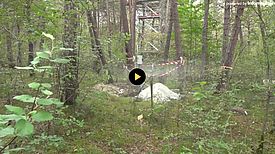
Earthworms in drought sleep: Due to climate change, dry periods are getting longer and longer, which is putting a strain on soil organisms. A long-term study in the Pfynwald forest shows just how much. (Kanal 9, 9.06.2022).
Researchers: Dry forest soils can store less CO2 in the long term ¶
![[Translate to Englisch:] Trockene Waldböden können langfristig weniger CO2 speichern](/fileadmin/_processed_/7/7/csm_deutschlandfunk_CO2_d7b2da97be.jpg)
Dry forest soils have a negative effect on climate change because earthworms in particular can no longer contribute well to fixing carbon in the soils, explains material cycle expert Frank Hagedorn in Dlf. Earthworms decompose less leaf litter during drought. In the long term, less carbon and thus also climate-impacting CO2 would be stored in the soil.
Krauter, Ralf, Deutschlandfunk | 01. 06. 2022, 16:47
Mysterious network: How trees are connected in the forest ¶
Ecoacoustics: The soundtrack of climate change. SRF Einstein ¶
What does it sound like in the ground? What does the forest sound like in a dry summer? Eco-acousticians like the Swiss sound researcher Marcus Maeder describe nature in a completely new way with the help of sound recordings. Sound becomes an indicator of an ecosystem. "Einstein" shows what opportunities ecoacoustics opens up.
Pine dieback in Valais - researchers wrap the trees in plastic. ¶
Metadata and Maps ¶
Metadata
- Are you starting a new study or updating an ongoing one? Please download the excel-sheet with the metadata from Pfyn forest, complete it with your up-to-date information in red and send the file by mail to Marcus Schaub.
- Pfyn_Metadata_vrs49.xlsx
Map
- Pfynwald 2024 (3.5 Mb)
Workshops ¶
Workshops
- 2024 Pfynwald Workshop, WSL, 7 March 2024
- 2022 Pfynwald Workshop, WSL, 14 Feb 2022
-
2020 Pfynwald Workshop, WSL, 17 Sept 2020
- 2014 Pfynwald Workshop
- 2013 Pfynwald Workshop
Terms of Use and Safety Concept ¶
Collaboration on the Pfynwald research platform is highly welcome! For your safety and for the integrity of the forest site, we kindly ask the collaborators to take note of the following Terms of Use and the Safety Concept.

